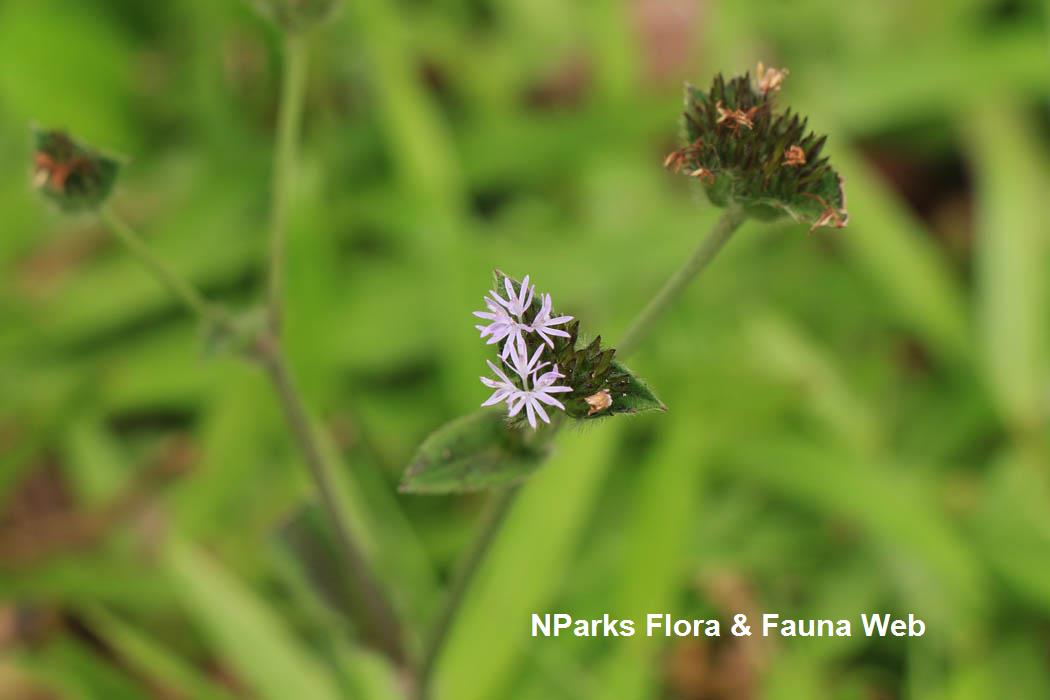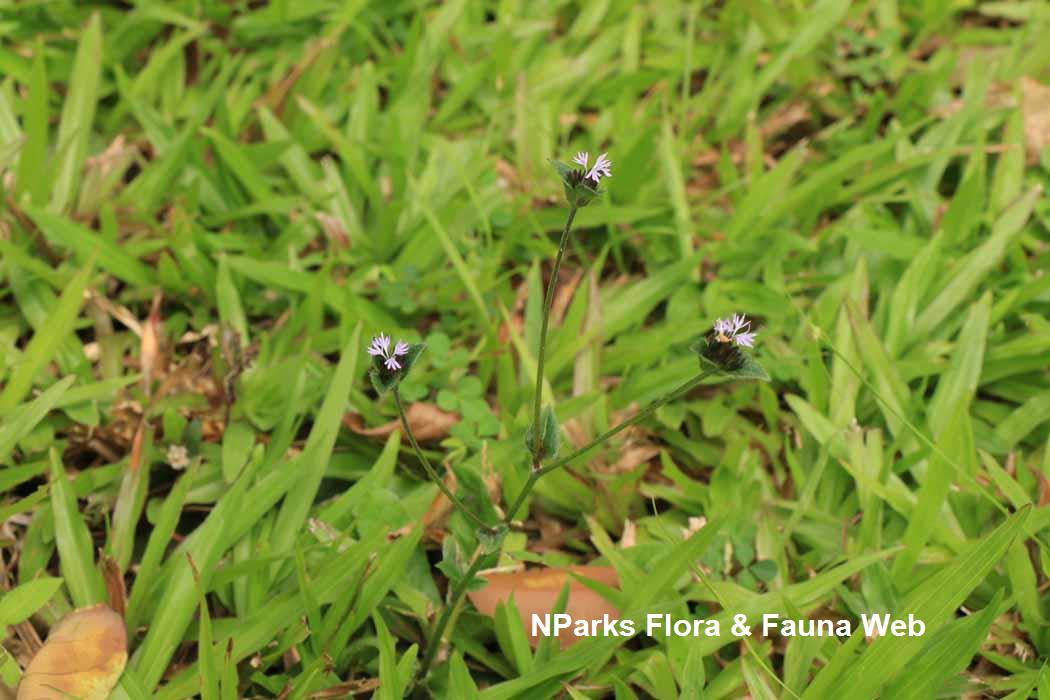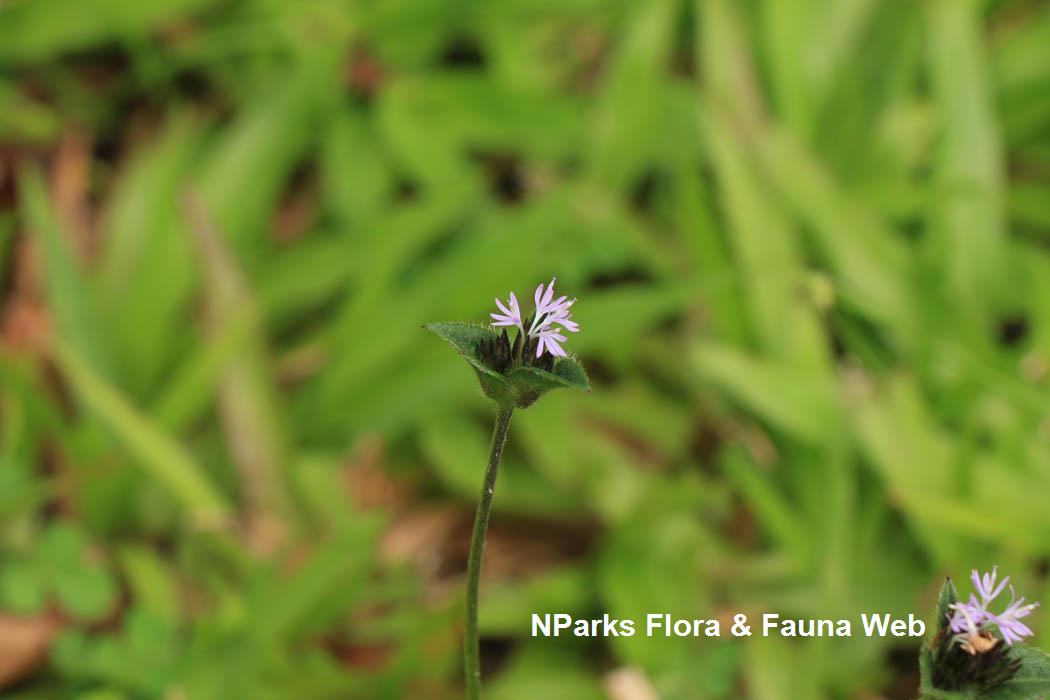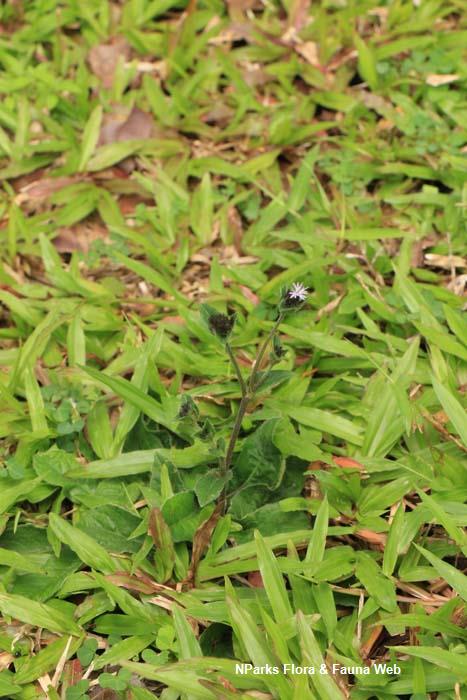
Back
Elephantopus scaber
| Family Name: | Asteraceae (Compositae) |
| Synonyms: | Elephantopus carolinensis, Elephantopus sordidus |
| Common Name: | Tutup Bumi, Elephant's Foot, Bull's tongue, Ironweed, 地胆草, 苦地胆, 鹿耳草(海南) |
Name
Classifications and Characteristics
| Plant Division | Angiosperms (Flowering Seed Plants) (Dicotyledon) |
|---|---|
| Plant Growth Form | Herbaceous Plant |
| Lifespan (in Singapore) | Perennial |
| Mode of Nutrition | Autotrophic |
| Maximum Height | 20 cm to 60 cm |
Biogeography
| Native Distribution | Asia, Australia |
|---|---|
| Native Habitat | Terrestrial |
| Preferred Climate Zone | Tropical |
| Local Conservation Status | Non-native (Spontaneous (Naturalised)) |
Description and Ethnobotany
| Growth Form | Perennial herb up to 0.6 m tall. |
|---|---|
| Foliage | Leaves (5-18 cm long, 2-4 cm wide) are spatulate (spoon-shaped) or oblanceolate (lance-shaped with the wider end closer to the tip). They are arranged in a rosette-like shape. |
| Stems | Stem branches dichotomously (splitting into 2 equal parts). It is densely covered in stiff, white hairs that lie pressed against the stem surface. |
| Flowers | The compound inflorescence is composed of many capitula (compound flowers composed of 4, purplish or pink florets). The floret is composed of 7-9 mm long petals which form a 4-5 mm long tube. |
| Fruit | Dry, one-seeded fruit are known as achenes (4 mm long). They are elongated, angled and covered in soft hairs. The fruit is attached to a pappus which is composed of 5-6, white bristles. |
| Ethnobotanical Uses | Medicinal: In many countries of Southeast Asia, Latin America and Africa, the plant is widely used in folk medicine to treat nephritis, edema, dampness, chest pain, fever and bladder stones. Roots are used to prevent vomiting, while leaves are used to treat eczema and ulcers. A powdered form is mixed with pepper and applied to sore teeth |
Plant Care and Propagation
| Light Preference | Semi-Shade |
|---|---|
| Water Preference | Little Water |
| Plant Growth Rate | Moderate |
| Rootzone Tolerance | Drought Tolerant, Well-Drained Soils, Easy to Grow |
| Propagation Method | Seed |
Foliar
| Mature Foliage Colour(s) | Green |
|---|---|
| Young Flush Texture(s) | Smooth, Hairy / Hirsute |
| Foliar Type | Simple / Unifoliate |
| Foliar Arrangement Along Stem | Rosulate / Rosette, Basal |
| Foliar Attachment to Stem | Petiolate |
| Foliar Shape(s) | Non-Palm Foliage (Spathulate, Oblanceolate) |
| Foliar Venation | Pinnate / Net |
| Foliar Margin | Serrate / Toothed, Crenate |
| Foliar Apex - Tip | Acute, Rounded |
| Foliar Base | Attenuate |
| Leaf Area Index (LAI) for Green Plot Ratio | 4.5 (Shrub & Groundcover - Dicot) |
Floral (Angiosperm)
| Flower Colour(s) | Purple, Pink |
|---|---|
| Flower Texture(s) | Smooth |
| Flower Grouping | Cluster / Inflorescence |
| Flower Location | Terminal |
| Individual Flower Shape | Tubular |
| Inflorescence Type | Head / Capitulum |
| Inflorescence Type Remarks | Compound inflorescence composed of many capitula. |
Image Repository
Others
| Master ID | 690 |
|---|---|
| Species ID | 5210 |
| Flora Disclaimer | The information in this website has been compiled from reliable sources, such as reference works on medicinal plants. It is not a substitute for medical advice or treatment and NParks does not purport to provide any medical advice. Readers should always consult his/her physician before using or consuming a plant for medicinal purposes. |








